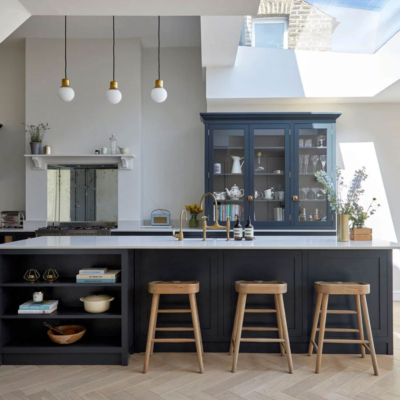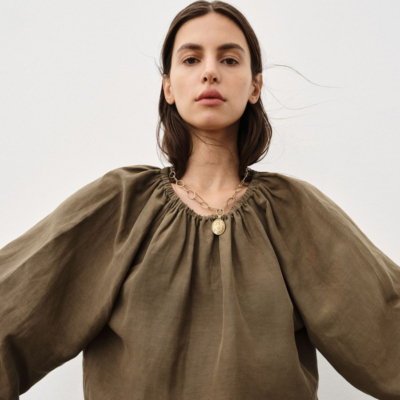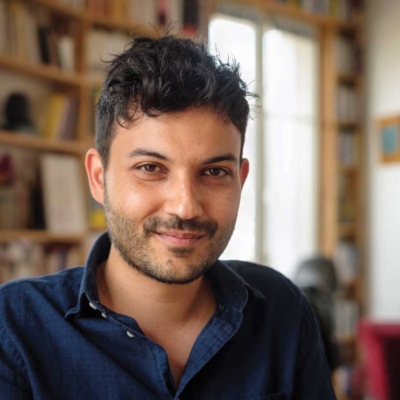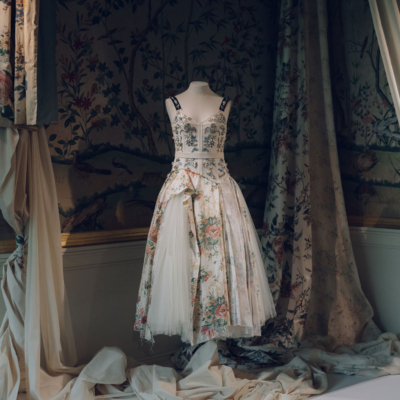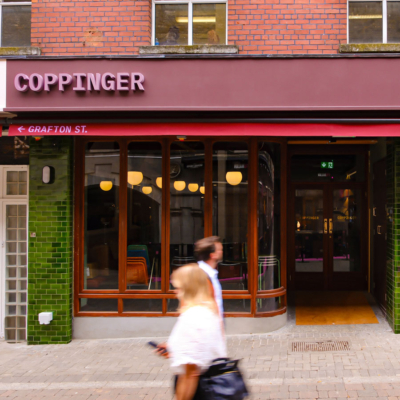Irish photographer Daniel Holfield has just relocated to Jordan, at the crossroads of Asia, Africa and Europe. On his first trip there, he documented in photos the ancient and beautiful country …
Jordan’s breathtaking natural beauty has been the setting for many powerful stories, both factual and fictional. Its arid and otherworldly landscape has fuelled the imaginations of Hollywood directors and left its mark on Western audiences via films such as Lawrence of Arabia, Indiana Jones and the Last Crusade, Prometheus, The Martian and most recently, Star Wars: The Rise of Skywalker. However, my journey to Jordan began by reading Queen Noor’s biography A Leap of Faith: Memoirs of an Unexpected Life about her marriage to King Hussein and their last 30 years within the kingdom, which became her home.
That home, a country not rich in oil and gas reserves unlike its neighbours, has had to chart its own course and by doing so has earned a reputation as an oasis of stability. Jordan and its leaders act as a peace-keeping conduit for neighbours Saudi Arabia, Iraq, Syria, Israel and the West Bank of Palestine. Its commitment to peace and harmony is reflected in the population of about ten million, which is made up of native Jordanians, about 2.1 million Palestinian and 1.4 million Syrian refugees, and thousands of Iraqi Christians fleeing persecution from ISIL. This is an ethnically diverse and remarkable mix from very different cultures, living in peace.
Basing myself in Jordan’s capital city Amman (30km south of Queen Latifa International Airport) would allow me to easily visit the King Hussein and King Abdullah mosques. However, as my trip unfolded, it was Jordan’s ancient Greco-Roman civilisation, which took my breath away and captured my imagination. Using Amman’s old Citadel as my starting point, I mapped out excursions which would allow me to explore Jordan’s complicated geographical position, traditions and heritage. I journeyed from the ancient Greco-Roman city of Jerash, to the salt lake Dead Sea before diving in Aqaba and finally visiting Wadi Rum and Petra. Walking the streets of Deir Ghbar, I stayed with friends in the affluent Abdoun suburb of Amman. The neighbourhood has an upwardly mobile feel to it, with spacious apartment complexes and palatial detached homes being built at a feverish pace. Emerging from air-conditioned and immaculately kept houses came maids and houseboys, washing their employers’ luxury cars, walking their dogs and running errands. But it was not uncommon to see waste-pickers rummaging through waste in the large steel wheelie bins which line the intersections, looking for something to recycle or sell.
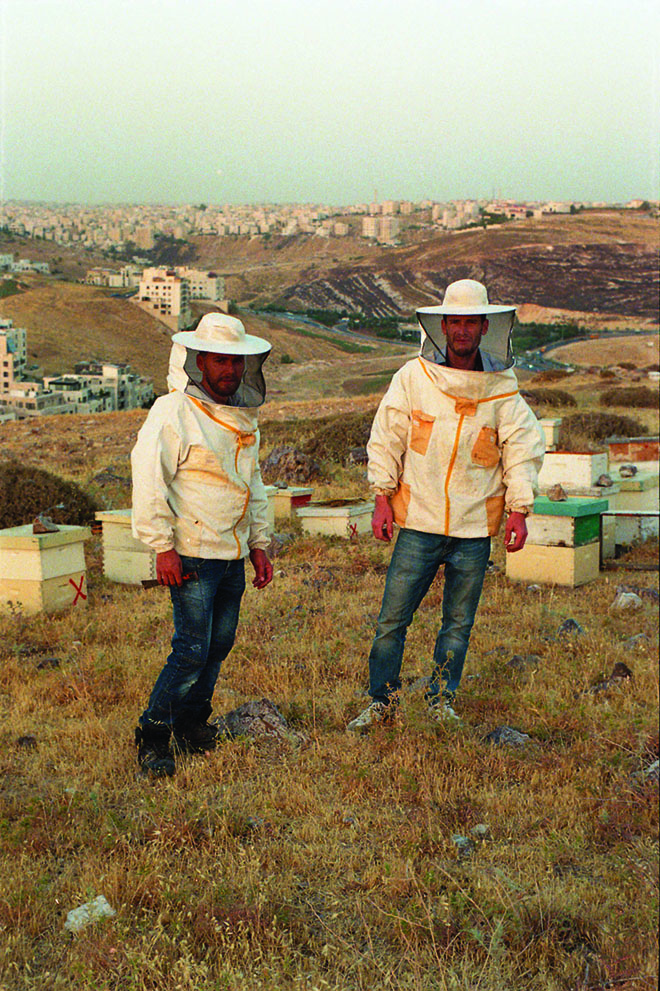
Beekeepers in the hills.
Walking the streets, I inserted myself into local life in order to document it. I chose to shoot on a 35mm analogue camera, because I wanted to slow down the process of looking. Conscious of the disruption generated by countless celebrity influencers and social media stars who flocked to Jordan’s historic sites and monuments pre-pandemic, I trod lightly. The knowledge that I could very well be standing next to someone whose journey to Jordan was so much more arduous than my own economy class seat imbued my perspective with the deepest sense of humility I’ve ever felt. My gentle approach seemed to win smiles as I met locals, from beekeepers and shepherds to shoppers and waiters.
The impact of Covid-19 could be seen and felt wherever I travelled. With its once booming tourist industry now decimated (although Jordan still enjoys a good level of medical tourism, their healthcare workers some of the best educated in the world) now a local incentive allows Jordanian residents pay a fraction of what foreign tourists would to enter a cultural site. I observed local weddings taking place at The Temple of Hercules in Amman’s Citadel, enjoyed hearing the laughter of Jordanians picnicking at the steps of Petra’s treasury, and admired their deep appreciation for their national treasures, these majestic and ancient sites.
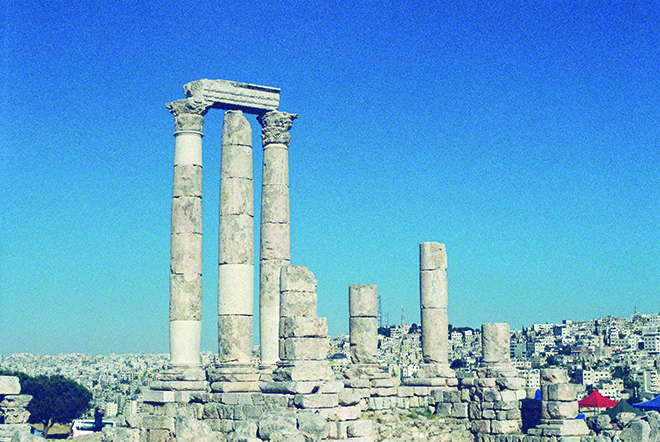
The Temple of Hercules.
On entry to Amman’s Citadel, you begin to feel what once was. Dating back to 1200BC and having endured numerous occupations, the Citadel acts as an introduction to Jordan’s long history of ancient civilisations. As the full moon rose above the Temple of Hercules against a cloudless blue sky, I fully understood why celestial phenomena played such a central role in ancient Roman culture.
I travelled north out of Amman to Jerash, which has been developed through millennia by Roman, Byzantine, Greek and Nabataen civilisations. The first mega structure you walk through upon arrival in Jerash is the Arch of Hadrian, built in the second century AD. As you walk through these ceremonial gates you are immediately transported to another time and place. The well-worn slabs of stone beneath my feet conjured up visions of horse-drawn wagons and tunic-clad Romans going about their day in what is now one of the world’s best preserved Greco-Roman cities. As with Petra, it is commonly believed that a large earthquake triggered the demise of these great civilisations, leaving temples crumbled and colonnaded streets toppled. However the overall effect is a captivating tableau of archaeological treasures frozen in time.

Full moon in Deir Ghbair.
I drove south on the Dead Sea Highway, where I travelled to the lowest elevated point on Earth, the Dead Sea. I became acutely aware once again of Jordan’s delicate position in the geography of the region. From the hotel lobby, I was able to look out across the Dead Sea towards the West Bank of Palestine, under Israeli occupation since 1967 and the scene of the most recent conflicts which subsided shortly before my trip. Wherever you travel across Jordan, you become entrenched in its history and consider how challenging maintaining peace in such a region must really be.
After the lake delivered blissful flotation therapy complemented by an ancient ritual of salt scrubbing and mud masking, I arrived at the Red Sea in Aqaba, the southernmost coastal city. Aqaba sits within Jordan’s golden triangle of tourism, close to Wadi Rum and Petra. It’s easy to see why the royal family has long maintained a residence in Aqaba. Listed as one of the top diving destinations in the world, the Red Sea offers a cornucopia of tropical sea life so bountiful you won’t want to come up for air. With sea salt still drying on my skin, I began the short drive to Wadi Rum. Staying overnight in a desert camp, I felt as though I was exploring another planet. Wadi Rum delivers a landscape nothing short of extra terrestrial. The silence enveloped me and incubated my senses, fine-tuning my awareness to my new surroundings.
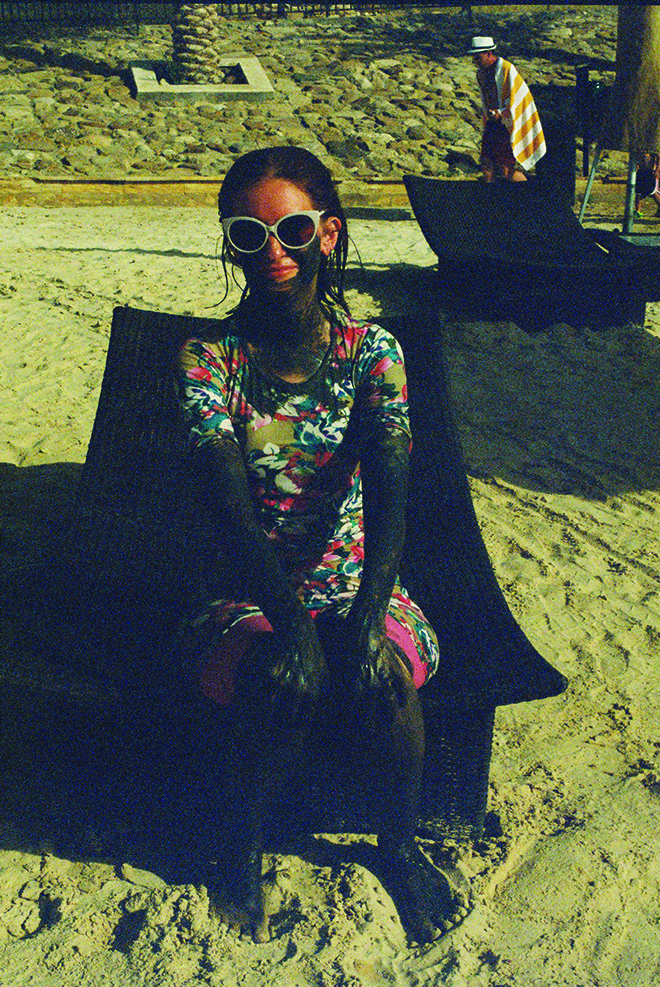
Mud masking at the Dead Sea.
Nestled deep within the pink sandstone cliffs of the Al Siq canyon, Petra offered its nomadic Arab founders, the Nabateans, a naturally fortified trading hub. Now a UNESCO heritage site, the gentle walk to its epicentre feels like a slow seduction, as little by little, its treasures are revealed. Petra requires a daylong excursion and has earned its position as one of the new seven wonders of the world. Re-acclimatising to the West is a process which has left me with more questions than answers about our society and culture. Jordan hasn’t escaped the effects of consumerism but its culture of antiquity is a reminder of slower times. Its impact on the soul is difficult to articulate and much better felt than explained. If you are tempted to walk in the footsteps of the ancients, the best time to visit is between February and May to avoid high summer heat. And with an average daily temperature of 23 degrees in December, Christmas in Jordan is very appealing indeed.

Sunset in Palestine.
JORDAN: NEED TO KNOW
BEFORE YOU GO: READ Leap of Faith: Memoirs of An Unexpected Life by Queen Noor ? Honor Lost: Love and Death in Modern-Day Jordan by Norma Khouri ? Married to a Bedouin by Marguerite Van Geldermalsen ? Out of Jordan: A Sabra in the Peace Corps Tells Her Story by Dalya Cohen-Mor ? Lion of Jordan: The Life of King Hussein in War and Peace by Avi Shlaim.
FLIGHTS From Dublin, fly Turkish Airways via Istanbul to Amman’s Queen Alia International airport, 30km south of the capital city. Alternatively British Airways and Royal Jordanian both offer non-stop services from Heathrow.
WHERE TO STAY
AMMAN The House Boutique Suites; www.thehouse.jo. The St Regis; www.marriott.com. The Fairmont; www.fairmont.com. W Amman: www.marriot.com/ w_hotels/amman.
A Day in Amman: For coffee: Try Shams El Balad; For lunch: Veer Resto Lounge; Ghoroub Rooftop on the rooftop of the Landmark Amman Hotel. For ethical shopping: The Jordan River Foundation founded by Queen Rania. For art: The Jordan National Gallery. Also visit the neighbourhood of Jabal Al Weibeh, with its art galleries, studios and cafes.
DEAD SEA Hilton Dead Sea Resort; www.hilton.com. Kempinski Hotel Ishtar: www.kempinski.com. Mövenpick Resort & Spa; www.movenpick.com.
AQABA Al Manara: www.almanaraluxurycollection.com-jordan. The Kempinski; www.kempinski.com.
WADI RUM AND PETRA Memories Aicha Desert Camp; www.mlc.jo. Petra Marriott Hotel; www.marriott.com. The Old Village Hotel & Resort; www.oldvillageresort.com.
LOVETHEGLOSS.IE?
Sign up to our MAILING LIST now for a roundup of the latest fashion, beauty, interiors and entertaining news from THE GLOSS MAGAZINE’s daily dispatches.





